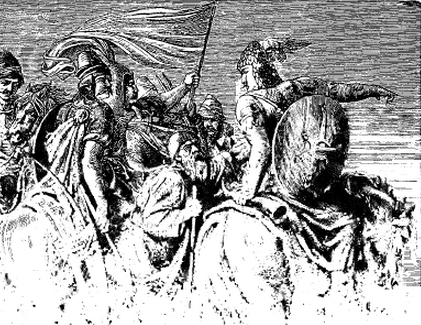<![CDATA[A group of archaeologists working in Denmark have made a gruesome discovery that reveals a great deal about the rituals and traditions of Iron Age tribes in the region. The site, in a lake near the Alken Enge Wetlands in East Jutland, was the location of a brutal battle some two thousand years ago. However, the new findings reveal the shocking fate of the losers bodies after the fighting was over. Among the grisly discoveries are crushed skulls, bundles of bones, sacrificial jars and a stick holding the pelvic bones of four different men. Archaeologists from Denmark’s Aarhus University have known the area was the site of a major battle since first discovering it in 2012, and have long suspected that the remains of the losers’ bodies had been tossed in the lake. The mass grave had been entombed in layers of peat for thousands of years, meaning hundreds of bones and artefacts have been well preserved. Radiocarbon dating has been used to pinpoint the time that the men perished. The presence of hacked bones, crushed skulls and weapons reveals the violent nature of the men’s deaths. Geological studies of the region have led researchers to conclude that the bodies were thrown into the river from a tongue of land that would have been much more substantial at the time. New discoveries reveal that the mens’ bodies were not immediately buried after the fighting, but in fact allowed to decompose on the battlefield for six months. After this they underwent a process of ritualistic desecration and butchering. Many of the bones that were discovered had cut and scrape marks on them, possibly indicating that all the flesh and sinew had been deliberately removed. The bones were then scattered and buried with the remains of slaughtered animals and clay pots that were probably used to carry food sacrifices. The treatment of the bones has led archaeologists to conclude that this was likely to have been some kind of ritualistic ceremony by the battle’s winners. Mads Kahler Holst said “We are fairly sure this was a religious act. It seems that this was a holy site for a pagan religion.” Despite having a good idea about the significance of the site, the scientists are still unsure as to exactly who the fallen warriors were, or indeed, who desecrated their bodies in such carefully brutal fashion. The time of the battle would coincide with the period when the Roman Empire was aggressively and quickly advancing north towards Scandinavia. This movement northwards inevitably resulted in conflicts between Roman troops and the Germanic tribes in the area. However, the increased pressure for land also caused conflict amongst the various tribes themselves. The archaeologists at Alken Enge believe this battle was likely to have been such a clash. Roman chroniclers provide bleak accounts of the practices carried out by Germanic tribes on their vanquished enemies. Tacitus described a site near Bremen where a group of Romans were massacred. The soldiers who found the site encountered broken weapons, dead horses, heaps of bleached bones and skulls nailed to trees. Similar ritualistic practices were also carried out in Scandinavia. The Alken Enge site is located within Illerup Adal river valley, where archaeologists have found evidence of a multitude of sacrificial locations. This latest discovery in Denmark is the first of its size, and reveals a great deal about the fierce traditions of the Germanic tribes who used to dominate Northern Europe.]]>
Archaeologists Make Grisly Discovery in Denmark
